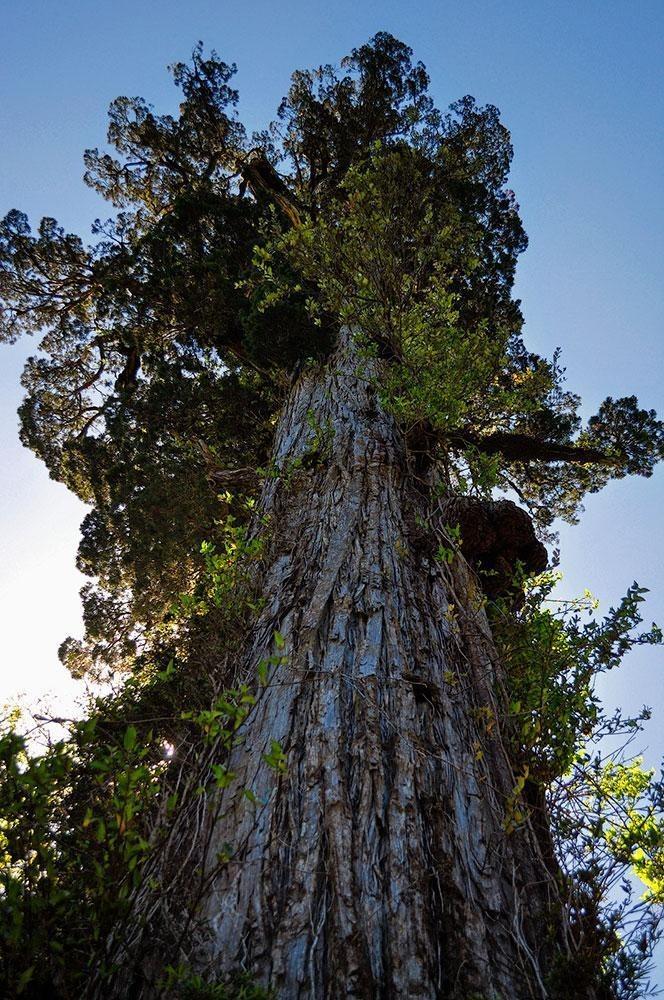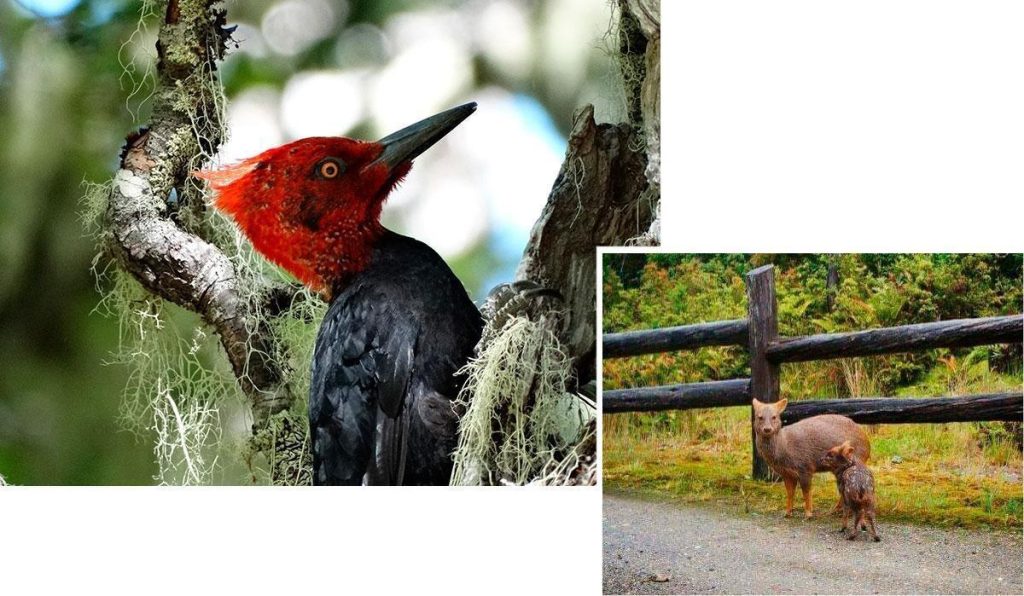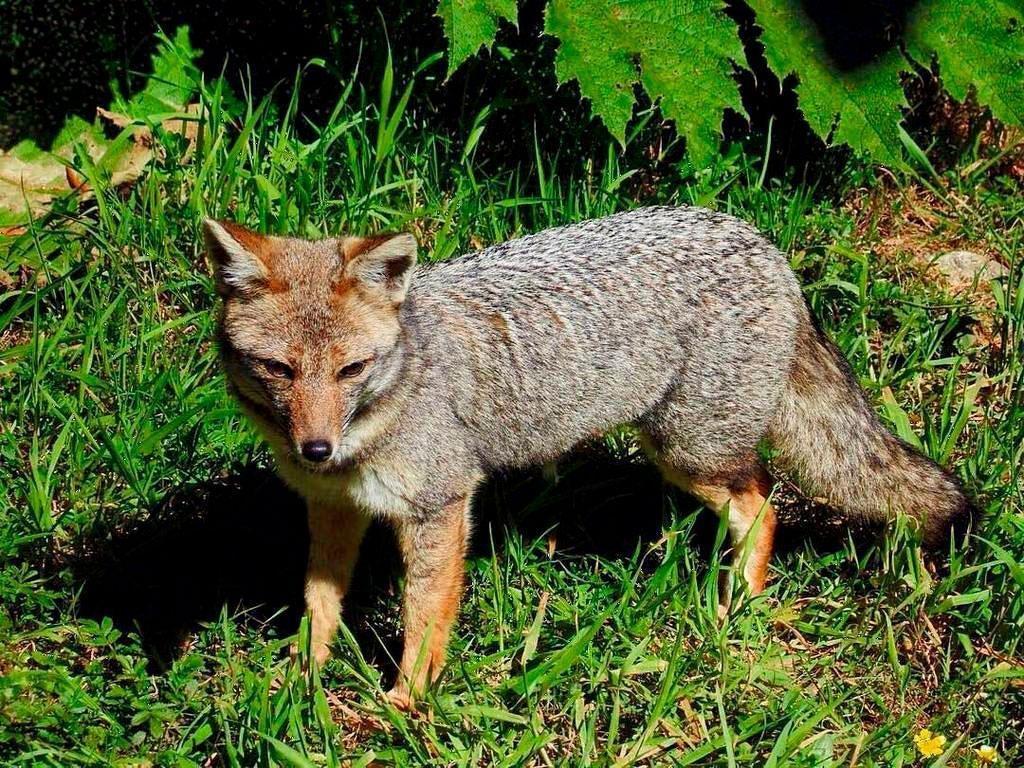Located in the Los Lagos region in Chile, the Alerce Andino National Park is a legendary protected area for Chileans because it is the habitat of the legendary alerce trees, some of the oldest trees on the planet. This park offers great biodiversity and stunning landscapes. From hiking and fishing to simply enjoying nature, this visitor’s guide will help you explore every corner without missing anything.
Content
Facts about Alerce Andino National Park
Location & Access
Located in the region of Los Lagos, in the province of Llanquihue, Chile, belonging to the commune of Puerto Montt and Cochamó, at a distance of approximately 46 km from the city of Puerto Montt. This wonderful reserve is part of the Temperate Rainforest Biosphere Reserve of the Southern Andes, highlighting its importance within the natural heritage of the region.
It can be geographically located using the coordinates: 41°34′41″S latitude and 72°32′39″W longitude, which corresponds to the following decimal coordinates: -41.57795, -72.54414.
History and Establishment of Alerce Andino
Established on November 17, 1982, through Supreme Decree 735 issued by the Ministry of National Assets, with an area of 39,255 hectares, it is located in the province of Llanquihue, encompassing the communes of Puerto Montt and Cochamó. This protected area is located between the Reloncaví Sound and Estuary, in the picturesque mountainous area south of Lake Chapo. Its name comes from the thousand-year-old larch trees, which are a prominent feature of the park.
Geography and Climate
Topography
The park covers 39,255 hectares, with altitudes ranging from sea level to 1,571 meters. The landscapes vary from valleys to high mountains.
Climate & Seasons
The climate is oceanic, temperate, rainy. Rainfall is abundant and constant, even during the summer season. The average annual temperature in this area is around 11 °C.
Hydrography
The park has numerous lakes, rivers, and streams, forming a complex hydrographic system that is essential for the local flora and fauna.
Flora and Fauna
The Millennial Larches
The park is famous for its larch trees, which can be more than 3,000 years old. These trees are an integral part of the ecosystem and a main attraction for visitors, occupying almost 20,000 hectares of its extension. This species of tree preferentially grows at altitudes above 400 meters above sea level and is usually found in association with other species such as the Chiloé coigüe, the tineo, the mañío and the canelo.
Flora
It is dominated by a rich diversity of flora, mainly in the form of forests, highlighting forest types such as larch, evergreen, Magellanic coigüe and lenga. The larch is the most representative species in the park, occupying almost a large part of the protected area.
The predominant presence of the larch gives the park a unique and special characteristic, as this tree is legendary for its longevity and beauty. There are also other plant species, including ferns, mosses, and a variety of wildflowers.
Fauna
It is the habitat of different species, including mammals. Among them, the pudú, a small deer endemic to the region; the majestic puma, an emblematic feline of the area; the güiña, a small and elusive feline; the gray fox, known for its agility and adaptability; the chingue, a small nocturnal marsupial; and the monito del monte, an arboreal marsupial that lives in forests.
Among the birds in the park we can find the iconic condor, the black woodpecker, the huet huet, a bird endemic to temperate forests; the kingfisher, with its bright colors and hunting habits; the peuco, a bird of prey characteristic of the region; the mallard, which inhabits the park’s bodies of water; the caiquén, a species of wild goose; the cachudito, a small crested bird; and the dove, a pigeon native to the area.
In addition, in the park’s water bodies, such as rivers and lakes, is the native fish species known as percatrucha, which is an important part of the region’s aquatic ecosystem.
Native Fauna and Endangered Species
Wildlife in the park includes the pudú, the Andean condor, and other species that are endangered or endemic to the region.
Main Attractions
Sargassum Lagoon
The Sargasso Lagoon Trail (in spanish: Sendero Laguna Sargazo) runs through lush native forest, dominated by majestic larch trees, until it reaches the enchanting Sargasso Lagoon. Enjoy a leisurely stroll as you revel in the natural beauty that surrounds this serene lagoon.
Cold Lagoon
The Cold Lagoon Trail (in Spanish: Sendero Laguna Fría) runs through more than 50 lagoons that are part of the wonders of the Alerce Andino National Park. Delve into nature and take in the unique biodiversity that inhabits this area as you approach this beautiful lagoon.
Triangle Lagoon
The Triangle Lagoon Trail (in Spanish: Sendero Laguna Triángulo) allows for a hike through the park’s landscape until you reach the Triangle Lagoon. Follow the trekking trail and be amazed by the scenic beauty as you make your way to this hidden lagoon.
Chaiquenes Lagoon
The Laguna Chaiquenes Trail (in Spanish: Sendero Laguna Chaiquenes) leads through larch forests until you reach the captivating Laguna Chaiquenes. Immerse yourself in the tranquility of this natural environment while being surrounded by the impressive presence of the larch trees.
Seagulls Lagoon
The Seagulls Lagoon Trail (in Spanish: Sendero Laguna Gaviotas) gives the opportunity to explore another of the beautiful lagoons within the park. Marvel at the serenity of this lagoon and keep your eyes out for birds such as seagulls that may inhabit its surroundings.
Huillifotén
The Huillifotén Trail surrounds the Huillifotén with forests and lagoons, offering a unique experience for those looking for a special connection with nature.
Viewpoints
Within the Alerce Andino National Park, two viewpoints can be found that offer spectacular views of the surrounding nature. One of them is located in the Correntoso area, while the other is located on the trail to Sargasso Lake. These viewpoints provide visitors with the opportunity to take in breathtaking scenery and immerse themselves in the beauty of the park.
Fishing
The park has no fishing grounds inside or adjacent areas, such as Lake Chapo and the Reloncaví estuary. However, fishing enthusiasts can find options at other nearby locations outside the park.
Services & Facilities
Visitor Centers
Visitor centers offer essential information, maps, and services to ensure an enjoyable and educational visit.
Accommodation & Meals
Near the Alerce Andino National Park, visitors can find diverse towns offering lodging and dining options to complement their experience in the region. Some of the nearby towns are:
- Puerto Montt: The largest city in the Los Lagos region, Puerto Montt, is located approximately 31 km from the park entrance in Correntso. Here, visitors can find a wide variety of accommodations, from hotels and hostels to cabins and apartments. In addition, there are numerous restaurants and cafes offering local delicacies and international dishes.
- Puerto Varas: About 45 km from Alerce Andino Park, Puerto Varas is another charming town nearby with plenty of accommodation and dining options. Overlooking the beautiful Lake Llanquihue and volcanoes, Puerto Varas is a popular spot for tourists and offers a picturesque and relaxing experience.
- Lenca: Located approximately 60 km from the park, Lenca is a small salmon town near the southern entrance of the Alerce Andino Park. Here, visitors can find some accommodation options and places to enjoy fresh local meals, especially seafood-based dishes.
These nearby towns provide visitors with the necessary services and amenities for their stay, as well as the opportunity to immerse themselves in the local culture and sample the delicious gastronomy of the region.
Picnic Counters
Picnic counters are available for use and operation in the Sargasso and Chaica sectors. These designated areas provide visitors with a perfect opportunity to enjoy al fresco meals surrounded by the park’s beautiful nature.
First Aid Services
For medical emergency situations, the park has first aid services available at different points nearby. Medical posts can be found in Correntoso 2.5 km from the park ranger’s office, at Lake Chapo 14 km from the town of Correntoso, in Lenca 9 km from the park and in Chaicas 10 km from the park.
Food Sales
For those who wish to stock up on food during their visit, there are retail options in the Correntoso, Lenca and Metri sectors, providing amenities for visitors during their stay in the park.
Carabineros de Chile
To ensure security and compliance with the law, the Carabineros de Chile checkpoint is present in the Correntoso sector, providing assistance and support to visitors as needed.
Visitor’s Guide
Best Time to Visit
The best time to visit Alerce Andino National Park is between December and March, during the summer season. Although the temperate rainy oceanic climate makes for abundant and consistent rainfall throughout the year, summer brings warmer and drier days, making it more comfortable for visitors to explore and enjoy the park’s natural wonders. During this period, average temperatures are more pleasant, which creates ideal conditions for outdoor activities and to appreciate the lush vegetation and biodiversity present in the protected area.
How to get there
To get to Alerce Andino National Park, it is easily accessible by road from Puerto Montt, which has the most convenient airport for Chile’s Lake District, and from Puerto Varas.
There are three entrances to the park, two of them to the north and one to the south. The two northern entrances are located at Correntso and Sargasso. To get to Correntso from Puerto Montt, you have to travel 31 km to the east. From Correntso, continue along the same path for another 12 km, turning south, to reach Sargasso, from where most hikes within the park start. The southern entrance is located in the Chaica sector of the park and can be reached by following the southern coastal road, 45 km from Puerto Montt, and turning off at the salmon town of Lenca.
If you are traveling from the south on the Carretera Austral, you will need to take two car ferries to get to Alerce Andino. First, from Caleta Gonzalo to Hornopirén, which operates twice a day in high season and takes approximately six hours. Then, a 30-minute journey is made in the Reloncaví Sound between Puelche and La Arena, from where it is 60 km to the entrance of the park near Lenca.
Entrance Fees
- National Child (under 12 years old): Income released.
- National Adolescent (12 to 17 years old): $2000.
- National Adult: $3000.
- National Older Adult (over 60 years old): Income released.
- National Disabled Child (age 12 and under): Income released.
- National Disabled Adolescent (12 to 17 years old): Admitted free.
- National Adult Disabled: $2000.
- National Disabled Older Adult (over 60 years old): Income released.
- Foreign Child (under 12 years old): Income released.
- Foreign Adolescent (12 to 17 years old, including disabled): $3000.
- Adult and Senior Citizen (includes disabled): $6000.
Important: Admission to the Correntoso sector is free of charge. For the Chaicas sector, payment is made in cash only.
Basic kit for the visit
For a safe and enjoyable visit to the park, be sure to bring appropriate footwear, layered clothing in case it gets cold or the temperature rises so you can take off your coat, a backpack with water and food, sunscreen, insect repellent, and maps. Respect nature and follow park regulations.





